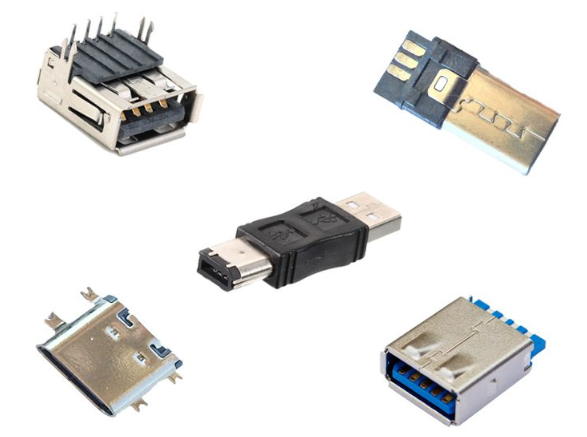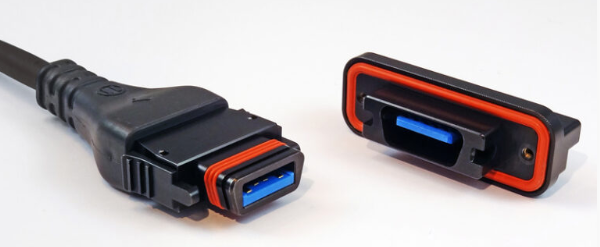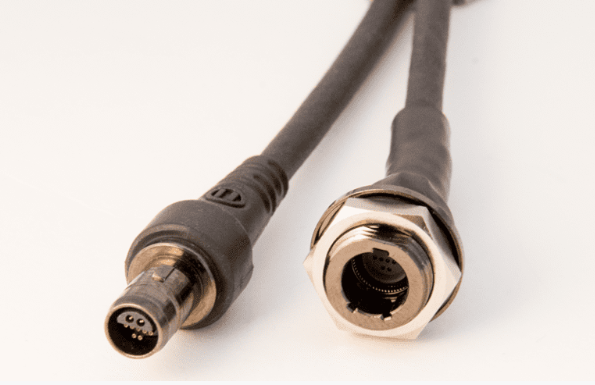USB is popular for its compatibility with numerous platforms and operating systems, low implementation costs, and ease of use. Connectors come in many shapes and sizes and serve a variety of functions.
USB (Universal Serial Bus) is an industry standard developed in the 1990s for connections between computers and peripheral devices. USB is popular for its compatibility with numerous platforms and operating systems, low implementation costs, and ease of use.
USB-IF (Universal Serial Bus Implementers Forum, Inc.) is the support organization and forum for the advancement and adoption of USB technology. It was founded by the company that developed the USB specification and has more than 700 member companies. Current board members include Apple, Hewlett-Packard, Intel, Microsoft, Renesas, STMicroelectronics and Texas Instruments.
Every USB connection is made using two connectors: a socket (or socket) and a plug. The USB specification addresses the physical interface and protocols for device connection, data transfer, and power delivery. USB connector types are represented by letters that represent the physical shape of the connector (A, B, and C) and numbers that represent the data transfer speed (for example, 2.0, 3.0, 4.0). The higher the number, the faster the speed.
Specifications - Letters
USB A is thin and rectangular in shape. It is probably the most common type and is used to connect laptops, desktops, media players, and game consoles. They are primarily used to allow a host controller or hub device to provide data or power to smaller devices (peripherals and accessories).
USB B is square in shape with a beveled top. It is used by printers and external hard drives to send data to host devices.
USB C is the latest type. It is smaller, has an elliptical shape and rotational symmetry (can be connected in either direction). USB C transfers data and power over a single cable. It is so widely accepted that the EU will require its use for battery charging starting in 2024.

A full range of USB connectors such as Type-C, Micro USB, Mini USB, available with horizontal or vertical receptacles or plugs that can be installed in different ways for I/O applications in a variety of consumer and mobile devices.
Specifications - Numbers
The original specification USB 1.0 (12 Mb/s) was released in 1996, and USB 2.0 (480 Mb/s) came out in 2000. Both work with USB Type A connectors.
With USB 3.0, the naming convention becomes more complex.
USB 3.0 (5 Gb/s), also known as USB 3.1 Gen 1, was introduced in 2008. It is currently called USB 3.2 Gen 1 and works with USB Type A and USB Type C connectors.
Introduced in 2014, USB 3.1 or USB 3.1 Gen 2 (10 Gb/s), currently known as USB 3.2 Gen 2 or USB 3.2 Gen 1×1, works with USB Type A and USB Type C.
USB 3.2 Gen 1×2 (10 Gb/s) for USB Type C. This is the most common specification for USB Type C connectors.
USB 3.2 (20 Gb/s) came out in 2017 and is currently called USB 3.2 Gen 2×2. This works for USB Type-C.
(USB 3.0 is also called SuperSpeed.)
USB4 (usually without the space before the 4) came out in 2019 and will be widely used by 2021. The USB4 standard can reach up to 80 Gb/s, but currently its top speed is 40 Gb/s. USB 4 is for USB Type C.

Omnetics Quick Lock USB 3.0 Micro-D with latch
USB in various shapes, sizes and features
Connectors are available in standard, mini and micro sizes, as well as different connector styles such as circular connectors and Micro-D versions. Many companies produce connectors that meet USB data and power transfer requirements, but use special connector shapes to meet further requirements such as shock, vibration, and water ingress sealing. With USB 3.0, additional connections can be added to increase data transfer speeds, which explains the change in shape. However, while meeting data and power transfer requirements, they do not mate with standard USB connectors.

360 USB 3.0 connector
Application areas PCs, keyboards, mice, cameras, printers, scanners, flash drives, smartphones, game consoles, wearable and portable devices, heavy equipment, automotive, industrial automation and marine.
Post time: Dec-18-2023

